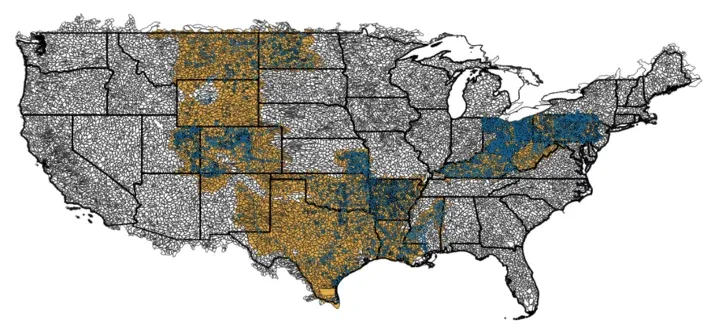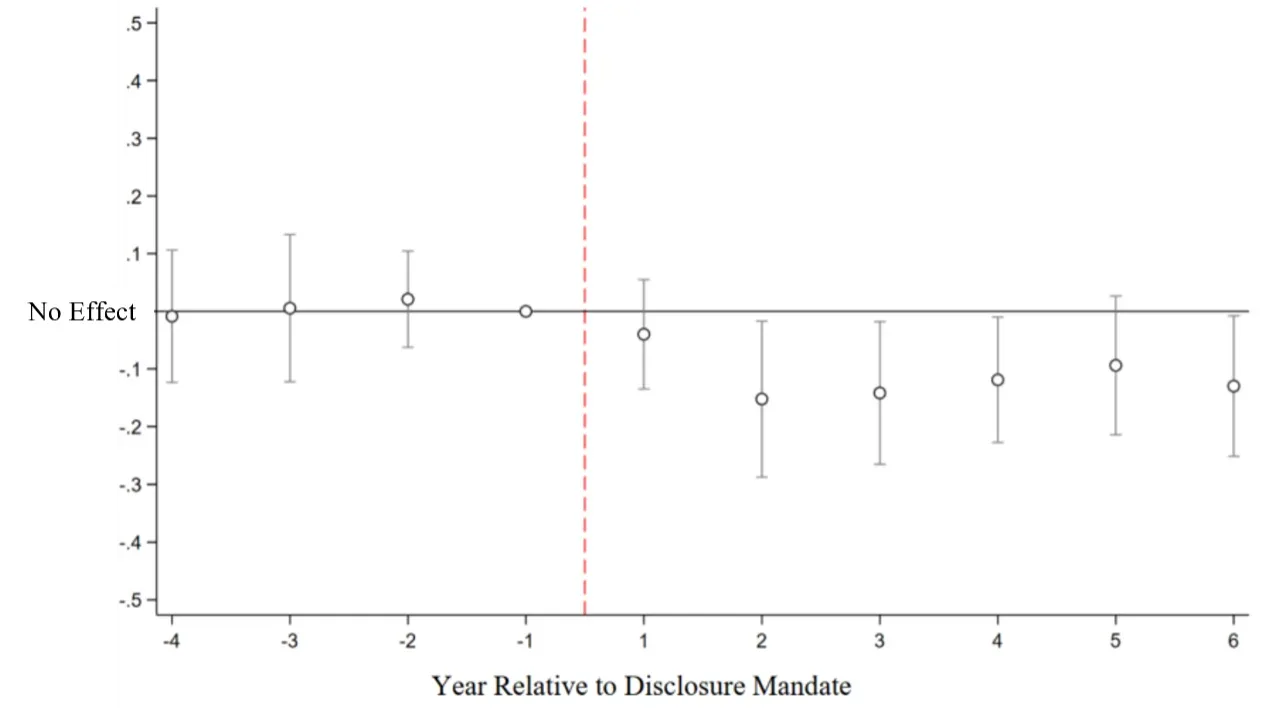
HKU Jockey Club Enterprise Sustainability Global Research Institute
World-Class Hub for Sustainability
Pietro Bonetti | Christian Leuz | Giovanna Michelon
Internalizing Externalities through Public Pressure: Transparency Regulation for Fracking and Water Quality
May 12, 2025
Key Takeaways
- This study evaluates whether transparency mandates—rather than direct regulatory limits—can mitigate environmental harm from hydraulic fracturing (HF).
- Drawing on high-frequency water-quality data, the authors find mandatory HF disclosure laws led to a 9%–14% reduction in fracking-related contaminants in surface water.
- These improvements occurred without significant declines in fracking activity, suggesting firms responded through behavioral adjustments rather than exit.
- Environmental gains were greatest in areas with stronger local media presence, civic activism, and protest activity—highlighting the role of transparency in galvanizing public pressure and social movements.
- The findings demonstrate transparency mandates can internalize environmental externalities through public pressure, offering a politically viable complement (but not substitute) to conventional regulation.
Source Publication:
Bonetti, P., Leuz, C., & Michelon, G. (2024). Internalizing Externalities through Public Pressure: Transparency Regulation for Fracking and Water Quality. SSRN Working Paper.
Background and Research Question
Hydraulic fracturing (HF) has dramatically expanded domestic energy production in the US, but it has also raised persistent concerns about environmental externalities—particularly surface water contamination linked to HF wastewater. The policy response has often lagged, constrained by political resistance to direct regulation and a fragmented federal-state regulatory landscape. In this context, a growing number of US states have turned to transparency mandates, requiring firms to disclose the chemicals used in fracking operations. This paper investigates whether such information-based policies—absent direct pollution limits—can meaningfully reduce environmental damage, and if so, how.
Method and Data
To identify the environmental effects of transparency regulation, the authors exploit the staggered adoption of fracking chemical disclosure laws across US states between 2010 and 2015. This variation allows for a difference-in-differences research design that compares changes in water quality in fracking-active watersheds before and after policy implementation, relative to similar watersheds unaffected by the mandates.
The analysis leverages a rich panel dataset that combines the locations and timing of over 150,000 hydraulic fracturing wells with more than 325,000 water-quality readings from nearby surface water monitoring stations. The authors focus on four salts or ions—bromide, chloride, barium, and strontium—that serve as well-established tracers of fracking wastewater. These ions are long-lived in surface water, and elevated concentrations are considered signatures of contamination from HF operations.
Figure 1 Location of HF Wells and Water Monitoring Stations

Panel A – Location of HF Activity by Watershed

Panel B – Location of Water Monitoring Stations by Watershed
Note: Figure 1 shows the location of HF activity (Panel A) and the location of water monitoring stations (Panel B) across watersheds (HUC10s). Watersheds in the treatment sample are in red. Watersheds in the control sample are in ocher. Blue dots mark the location of monitoring stations. Thin black lines outline HUC10 boundaries; thick black lines depict state boundaries.
The spatial and temporal resolution of the water-quality data enables the authors to detect localized changes in environmental conditions with considerable precision. By anchoring their identification on specific HF-related chemical signatures, the authors are able to isolate policy-induced effects from broader trends in water quality or unrelated regulatory shifts.
Findings
The results indicate disclosure mandates led to a 9%–14% reduction in concentrations of HF-related contaminants in surface water. These improvements are statistically significant and localized—appearing only in fracking-active watersheds and only for the specific chemical markers associated with HF wastewater. This pattern rules out spurious correlation with unrelated regulatory changes or broader shifts in water quality.
Figure 2 The Effect of HF Disclosure Regulation on Ion Concentration

Note: Figure 2 plots coefficient estimates of the disclosure mandates on the natural logarithm of ion concentration, along with 95% confidence intervals. The regression includes year indicators relative to the state-specific implementation date of the disclosure mandate. Year 1 comprises all water measurements that take place within the first 365 days from the state-specific entry-into-force date. Year -1 comprises measurements in the 365 days before the entry-into-force date. The coefficient for the year before the disclosure mandate (-1) is omitted from the regression and therefore serves as benchmark.
Importantly, the decline in environmental pollutants did not simultaneously reduce oil and gas production. The number of new HF wells declined by only 7%, and overall energy output remained largely stable. This finding suggests firms responded to public pressure by changing their waste-handling or disposal practices, rather than scaling back operations. The observed improvements were thus achieved through behavioral adjustment, not industry contraction.
Mechanism
What drives the effectiveness of these transparency rules? The evidence points to local public pressure as the key mechanism. The environmental gains are significantly larger in areas with active local newspapers, environmental NGOs, or visible protest activity. Furthermore, the introduction of disclosure laws led to increased media coverage of fracking and environmental topics, as well as increased anti-fracking protests and volunteering at local NGOs, suggesting the newly available information was actively used at the local level.
This finding aligns with the hypothesis that transparency rules facilitate informal enforcement by making firms more accountable to public scrutiny, even without legal penalties. It also highlights the role of local civic infrastructure in translating information into action.
Implications
The findings contribute to a broader literature on the role of information disclosure in regulatory policy. This study shows transparency can materially reduce environmental externalities when embedded in a setting with active civic engagement. It suggests transparency may work best as a complement, amplifying the power of local actors and reputational incentives.
For policymakers, the implication is that even in resource-constrained environments, well-designed transparency mandates can deliver meaningful environmental improvements if, indeed, they increase public pressure. The results also underscore the importance of investing in local monitoring infrastructure, media freedom, and civil society—conditions under which information can be transformed into accountability.